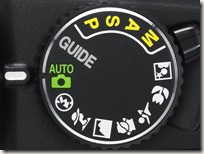As I looked at the photos from a short walk in the park I realized that I had inadvertently illustrated a lesson on color temperature and white balance. Four of my snapshots are shown here.
 We all know about color temperature. From the orange-y glow from a candle, the warm light of incandescent bulbs, the cool of fluorescents, the brilliant white of sunshine, to the steel-blue light in open shade under a blue sky outside. Us humans have no trouble at all recognizing a white sheet of paper as such under any of these lighting conditions. Modern cameras are clever enough to automatically adjust to do the same – and they do a good job of it.
We all know about color temperature. From the orange-y glow from a candle, the warm light of incandescent bulbs, the cool of fluorescents, the brilliant white of sunshine, to the steel-blue light in open shade under a blue sky outside. Us humans have no trouble at all recognizing a white sheet of paper as such under any of these lighting conditions. Modern cameras are clever enough to automatically adjust to do the same – and they do a good job of it.
There are occasions when a camera might not get the automatic adjustment right on. I was photographing food items last week under warm incandescent lights.  I wanted to make sure that the “white balance” was good – that the white plates were indeed white in the photos, so I used the manual setting.
I wanted to make sure that the “white balance” was good – that the white plates were indeed white in the photos, so I used the manual setting.  Most cameras have a group of manual settings in addition to a number of automatic modes. The manual settings are typically labeled M, A, S, P, for completely Manual, Shutter speed selected, Aperture selected, and a manually definable Program mode (shown in yellow in my illustration).
Most cameras have a group of manual settings in addition to a number of automatic modes. The manual settings are typically labeled M, A, S, P, for completely Manual, Shutter speed selected, Aperture selected, and a manually definable Program mode (shown in yellow in my illustration).
In the manual modes on most cameras a variety of settings can be specified, like white balance, and the camera will remember those settings. I had done this, as I mentioned, for my “food shoot”. So now to my afternoon walk.
With my camera either on AUTO, ![]() , or “close up”,
, or “close up”, ![]() , I can take photos without much fuss. The camera takes care of the work – including setting for color temperature. On this walk there were several scenes where I wanted more depth of field so I switched to “A”, aperture preferred, and set the lens to f/11. I did not notice that on the manual setting the camera remembered the white balance setting for “incandescent”. For that setting, since there is a lack of blue light coming from lamp bulbs, the camera multiplies the amount of the blue signal many times (and also the green to a lesser extent) in order to render white objects as white in the photo. Under daylight now, with plenty of blue light, resulting photos, were, let’s say, worthy of being called “cyanotypes”. Since the camera was still compensating the exposure there was precious little information in the reds.
, I can take photos without much fuss. The camera takes care of the work – including setting for color temperature. On this walk there were several scenes where I wanted more depth of field so I switched to “A”, aperture preferred, and set the lens to f/11. I did not notice that on the manual setting the camera remembered the white balance setting for “incandescent”. For that setting, since there is a lack of blue light coming from lamp bulbs, the camera multiplies the amount of the blue signal many times (and also the green to a lesser extent) in order to render white objects as white in the photo. Under daylight now, with plenty of blue light, resulting photos, were, let’s say, worthy of being called “cyanotypes”. Since the camera was still compensating the exposure there was precious little information in the reds.
 This much color temperature error was way more than most editors can handle. Lesser error are easily compensated for in
This much color temperature error was way more than most editors can handle. Lesser error are easily compensated for in  Photo Gallery.
Photo Gallery.
Picasa has a neat eyedropper control that lets you pick an item in the photo that is supposed to be white, gray, or black, and and corrects the color temperature with a single click.
As for my beyond-correction photos – why, I just turned them into “art”!
.:.
© 2012 Ludwig Keck






